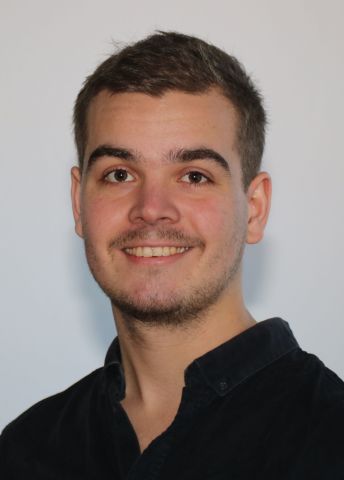
Program for mathematics 2019
Grant to a post-doctoral position abroad
Simon Larson
KTH Royal Institute of Technology
Post doc at
Ludwig-Maximilians-Universität, München, Germany
Grant to a post-doctoral position abroad
Simon Larson
KTH Royal Institute of Technology
Post doc at
Ludwig-Maximilians-Universität, München, Germany
Hearing the shape of a drum
Simon Larson will receive his doctoral degree in mathematics from KTH Royal Institute of Technologyin 2019. Thanks to a grant from the Knut and Alice Wallenberg Foundation, he will hold a postdoctoral position with Professor Rupert Frank at Ludwig-Maximilians-Universität,München, Germany.
The proposed project lies at the intersection of mathematical physics, geometry and spectral theory. Interest in studying the relationship between geometry and spectral theory increased significantly in 1966, when the Polish-American mathematician Mark Kac held an acclaimed lecture. He asked the question: Can a person with perfect pitch determine the shape of a drum membrane based on its sound? It took almost thirty years for mathematicians to answer the question: No, you can’t hear the shape of a drum.
The mathematical challenge was to derive the shape of a surface from its eigenvalues, constants that determined by the surface. These are the frequencies that the surface can resonate in; the set of frequencies is called the surface spectrum. So, the question is: if the spectrum of a surface is equal to the spectrum of another surface, can it be concluded that the surfaces are geometrically identical? It was demonstrated that it is possible to construct two different surfaces using the same eigenvalues, which means that it is not possible to uniquely derive a surface from its spectrum. In other words, the shape of the drum may vary, but the sound remains the same.
Therefore, it is impossible to accurately determine the geometry of a surface based on its spectrum. But it is possible, for example, to describe its area or perimeter. The proposed research project is about using eigenvalues to understand the geometry of surfaces that solve certain types of extremal problems, for example minimizing the eigenvalues. Many of these problems are rooted in mathematical physics, particularly in quantum mechanics, where spectrum is given by light frequencies. However, wherever the problem originates, it is often useful to understand the properties of its solutions, especially when it is not possible to provide a precise answer.